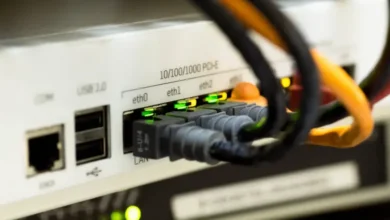How does IQF work
Perhaps you’ve heard of it, or this is your first encounter with ‘IQF’ and you’re looking for answers. Here you will find them. IQF stands for individually quick-frozen, a type of freezing that quickly and efficiently freezes small pieces of food products, be it fruits, vegetables, or even meat. Instead of being frozen together, the pieces are frozen separately, creating a premium product and offering dozens of unique benefits.
IQF is primarily a food freezing technique based on the flash-freezing approach. Flash-freezing focuses on freezing products as quickly as possible, under specific circumstances, to create frozen food that will last longer and store better. The reason for that can be best explained through the anecdote that originates flash-freezing.
During the 1920s, Clarence Birdseye discovered flash-freezing by accident during his recurrent fishing trips. He took note that the indigenous Inuit tribes in Canada used to lay their freshly caught fish directly onto the snow, where it would quickly freeze in the chilly air. The fish would then taste practically fresh after it was cooked. Inspired by his findings, he recreated the process a couple of years down the line. At the time, commercial freezing solutions offered unimpressive benefits. At the same time, large volumes of fish were left to spoil. Seeing an opportunity, he took to creating the foundation of what we now know to be the frozen food industry.
IQF processing
To delve deeper into how IQF works, we need to understand the IQF processing steps that take place during the preparation of the frozen product. Unlike old-school methods that place the food into boxes and drop them off into cold storage, waiting for them to freeze, and letting the pieces stick together, IQF works quickly. That speed is due to the airflow inside the equipment. In addition to the Freezer, it includes a couple of key pieces of machinery that play a key role in the creation of frozen goods, depending on the product. Let’s take a look at the example of blanched and then frozen food products.
- The first step in this type of IQF freezing process – is blanching. The food will be boiled with hot water, falling from above in small droplets, simulating rainfall. That guarantees uniform cooking and lasts for a few minutes. This step ensures the stop of enzymatic processes inside the food products and leaves them fit to be further processed.
- Then, the food is transported into the chiller, where it is washed with chilly water. The priority is still quick processing speed, so the temperature of the water is kept at a low of 1 degree Celsius. After a short rinsing of the water from the food, it is passed further.
- The IQF freezing tunnel – is the machinery responsible for IQF freezing the product. Inside the tunnel, frigid air is circulated by the fans, through bedplates. That makes the product spin in the air, keeping its pieces separate from each other and ensuring a uniform freezing process. Crucially, the bedplates here are a patented addition from Octofrost, and they aid in the freezing by ensuring freezing air blows from below, without damaging the surface of the product, improving the freezing process and making it more efficient and food safe.
Advantages of IQF freezing
With the processing detailed, it’s worth investigating what this kind of processing can offer that other methods can’t. To start with, under the right conditions, it provides the best food safety method, across the entire frozen food industry. Thanks to the innovative bedplate technology, no conveyor belts are necessary during the process. That makes it easier than ever to replace the plates, for cleaning outside the freezer, avoid cross-contamination or switch frozen product types on the fly. Furthermore, it makes replacing the plates possible during processing – that means there is no incentive to avoid cleaning them, as it comes at no cost to productivity.
Beyond that, key benefits are laid out in the quality, health, efficiency, and yield departments.
- Quality – the reason for the premium quality of the product has to do with the flash-freezing approach. During slower freezing methods, the quality of the product will drop. That is due to ice crystal formation inside the cells of the product. During freezing, the moisture on the surface and inside the product will crystallize, and the crystal size directly corresponds to the processing time, with bigger crystals being formed during longer processing times. Big crystal sizes damage cellular walls inside the product, creating alterations in the color, texture, taste, and shape of the pieces. By ensuring high processing speeds, it’s possible to create a product that lasts longer and keeps its original appearance.
- Health benefits – IQF technology can sometimes create products that are fresher than some of the options available at local food markets. The reason for it has to do, once more, with processing speed. As previously set up, the product will preserve its quality near-perfectly for an extended period. By freezing the product quickly, shortly after being harvested at pick ripeness, you can ensure all the vitamins, minerals, and other nutrients are locked and kept inside the product. This is not the case with fresh products which are transported from the fields to the supermarket for a long time. These are usually harvested half-ripe, to extend the shelf life, and therefore have a much lower nutritional value.
- Efficiency – modern technological approaches revolve around adding the most value to your business. That applies to IQF freezing as well. Adjustable fan speeds, water, and air recirculation systems, and unique, modern technological controls give you all the leeway needed to adjust processing to your exact parameters. Reach up to 30% energy savings in one slight change.
- Yield – Different temperature zones for cooking, precisely configurable freezing temperatures, and a processing capacity of up to 15,000 kg/h are just a few things that help you process a large amount of food quickly. Frozen food will last longer and serve as a premium product. High processing speeds keep dehydration to a minimum and the unique aerodynamics involved offer a reduced snow formation. The result is a far higher yield than many competing brands.
IQF is a continuation of a legacy built upon freezing solutions that work. Technology has improved on approaches that some cultures have successfully used for generations. Nowadays, any business can benefit from these advancements and unique technological benefits, by integrating the devices into their processing line or buying a whole processing line. Each approach has its distinct benefits, with the most appropriate course of action depending on your business. Don’t hesitate to contact the experts for a short consultation!




